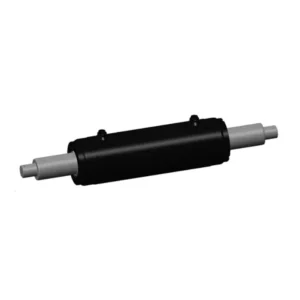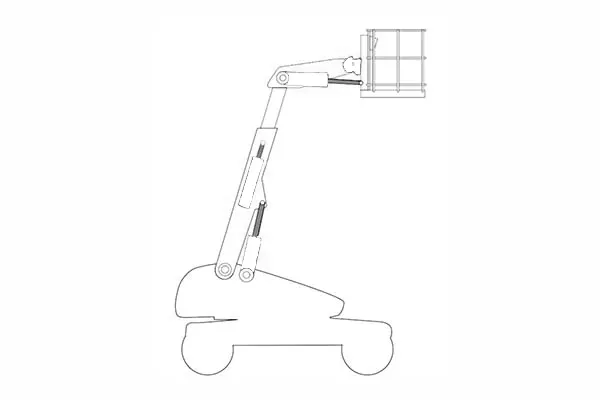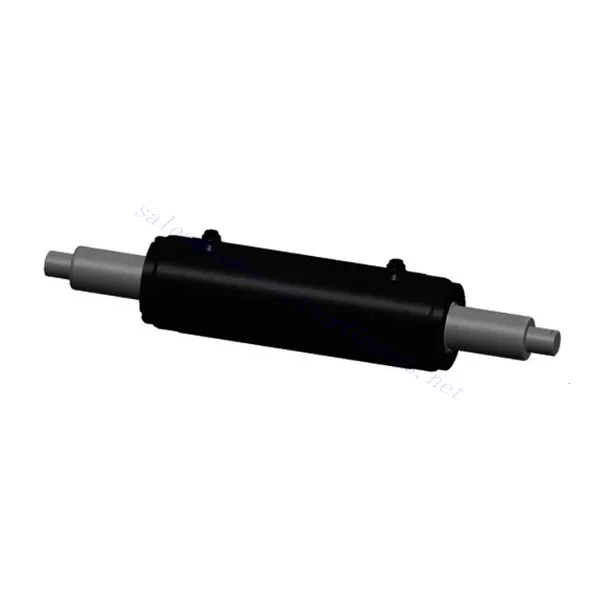Aerial Work Platform Steering Cylinder
Üheks hüdrosilindrite tootjaks, tarnijaks ja mehaaniliste toodete eksportijaks pakume hüdrosilindreid ja paljusid teisi tooteid.
Palun võtke meiega ühendust üksikasjade saamiseks.
Post:sales@hydraulic-cylinders.net
Tootja tarnija eksportija hüdrosilindrid.
Aerial Work Platform Steering Cylinder

The aerial work platform steering cylinder is a critical component designed to enhance maneuverability and control in aerial work platforms. This specialized hydraulic cylinder is vital in steering the platform, allowing operators to navigate safely and efficiently at elevated heights.
The aerial work platform steering is indispensable for enhancing maneuverability, control, and operator comfort in elevated work environments. With its robust construction, precise steering control, improved maneuverability, and operator-centric design, this hydraulic cylinder facilitates smooth navigation and efficient access in various elevated work applications. By following the recommended usage methods and maintenance practices, operators can maximize the longevity and performance of the aerial work platform steering, contributing to increased productivity, safety, and confidence in elevated work scenarios. Invest in this essential hydraulic component to elevate your aerial work platform’s maneuverability, control, and efficiency, unlocking new productivity levels and success in elevated work operations.
Aerial Work Platform Steering Cylinder Key Characteristics:
- Vastupidav konstruktsioon:
- The Aerial Work Platform Steering Cylinder is constructed using high-quality materials, ensuring durability and reliability.
- It is engineered to withstand the demands of challenging work environments and withstand heavy loads.
- Precise Steering Control:
- This cylinder facilitates precise steering control, enabling operators to maneuver the aerial work platform with accuracy and confidence.
- It ensures smooth and responsive steering, allowing for precise positioning and navigation in tight spaces or complex worksites.
- Enhanced Maneuverability:
- The Aerial Work Platform Steering Cylinder enhances the overall maneuverability of the platform, allowing operators to navigate efficiently and access hard-to-reach areas.
- It enables smooth turns and precise adjustments, contributing to increased productivity and versatility in elevated work applications.
- Operator Comfort:
- The steering cylinder is designed to provide ergonomic control, reducing operator fatigue and enhancing comfort during extended work periods.
- It offers smooth and effortless steering, minimizing operator effort and ensuring a comfortable working experience.
Aerial Work Platform Steering Cylinder Parameter:
| Product Name | Aerial Work Platform Steering Cylinder |
| Features: | Steering system for chassis tires of aerial work vehicles |
| Bore diameter: | 63mm~200mm |
| Rod diameter: | 36mm~140mm Stroke≤1000mm |
| Pressure: | 30MPa(Maximum pressure) |
| Hydraulic Steering Cylinder Applications: | Aerial Work Platform |
Aerial Work Platform Identification Diagram:

Usage Method Of Aerial Work Platform Steering Cylinder:
- Installation and Setup:
- Follow the manufacturer’s instructions for proper installation and setup of the aerial work platform steering.
- Ensure that the cylinder is securely mounted and aligned to ensure optimal performance.
- Hydraulic Connection:
- Connect the steering cylinder to the hydraulic system of the aerial work platform according to the provided guidelines.
- Ensure all hydraulic connections are secure and properly sealed to prevent leaks or loss of hydraulic fluid.
- Steering Operation:
- Engage the control mechanisms or steering wheel on the aerial work platform to control the steering cylinder.
- Follow the recommended procedures and safety guidelines during the steering operation.
- Responsiveness and Precision:
- Familiarize yourself with the steering response and sensitivity of the platform equipped with the steering cylinder.
- Practice gradual and controlled steering inputs to achieve precise positioning and smooth maneuvering.
How To Flush Hydraulic System?
Flushing a hydraulic system is a crucial maintenance procedure that helps remove contaminants, old fluid, and debris from the system, ensuring optimal performance and longevity. Here’s a step-by-step guide on how to flush a hydraulic system:
- Gather the Required Tools and Supplies:
- Safety goggles and gloves
- Drain pan or bucket
- Clean rags or towels
- Wrench or pliers
- Hydraulic system flushing fluid (recommended by the manufacturer)
- Replacement hydraulic fluid (if needed)
- Prepare the Work Area:
- Park the equipment on a level surface and engage any safety mechanisms, such as setting the parking brake or blocking the wheels.
- Ensure there is sufficient ventilation in the area to avoid inhaling fumes from the flushing fluid.
- Identify the System Components:
- Familiarize yourself with the hydraulic system components, including the reservoir, filters, hoses, and fittings.
- Refer to the equipment’s manual or consult the manufacturer’s guidelines for specific instructions on locating these components.
- Drain the Existing Fluid:
- Place the drain pan or bucket beneath the hydraulic reservoir.
- Use a wrench or pliers to loosen the drain plug or remove the drain cap, allowing the old fluid to drain completely.
- Dispose of the old fluid in accordance with local regulations.
- Remove and Clean Filters:
- Locate the hydraulic filters and remove them according to the manufacturer’s instructions.
- Inspect the filters for signs of dirt, debris, or damage.
- Clean or replace the filters as necessary before reinstalling them.
- Connect Flushing Equipment:
- Attach a flushing line or hose to the hydraulic system, ensuring a secure connection.
- Position the other end of the flushing line into the container of flushing fluid.
- Flush the System:
- Slowly introduce the flushing fluid into the hydraulic system by turning on the equipment or activating the hydraulic pump.
- Allow the flushing fluid to circulate through the system for a specified duration as recommended by the manufacturer.
- Operate any hydraulic controls to ensure the flushing fluid reaches all components.
- Drain the Flushing Fluid:
- Disconnect the flushing line from the hydraulic system.
- Reinstall the drain plug or cap on the reservoir.
- Allow the flushing fluid to drain completely into the drain pan or bucket.
- Refill with New Hydraulic Fluid:
- Ensure the reservoir is clean and free of any residual flushing fluid.
- Refer to the equipment’s manual or manufacturer’s guidelines for the appropriate type and quantity of hydraulic fluid.
- Slowly pour or pump the new hydraulic fluid into the reservoir, avoiding overfilling.
- Bleed and Test the System:
- Follow the manufacturer’s instructions for bleeding air from the system, if required.
- Start the equipment or activate the hydraulic pump, and operate the controls to ensure proper functioning of the system.
- Check for any leaks or abnormalities during operation.
Tehase võimekus ja suutlikkus:
(1) Kokkupanek
Meil on esmaklassiline sõltumatu teadus- ja arendustegevuse montaažiplatvorm. Hüdrosilindrite tootmistöökojas on neli poolautomaatset tõstesilindrite koosteliini ja üks automaatne kallutussilindrite koosteliin, mille kavandatud aastane tootmisvõimsus on 1 miljon tükki. Spetsiaalsete silindrite töökoda on varustatud erinevate spetsifikatsioonidega poolautomaatse puhastusmontaažisüsteemiga, mille kavandatud aastane tootmisvõimsus on 200 000 ja mis on varustatud kuulsate CNC-töötlemisseadmete, mehaanilise töötlemise keskuse, suure täpsusega silindrite töötlemise eriseadmete, robotkeevitusmasina, automaatse puhastusmasina, automaatse silindri kokkupanemise masina ja automaatse värvimise tootmisliiniga. Olemasolevad kriitilised seadmed rohkem kui 300 komplekti (komplekti). Seadmete ressursside optimaalne jaotamine ja tõhus kasutamine tagavad toodete täpsusnõuded ja vastavad toodete kvaliteedinõuetele.


(2) Töötlemine
Töödeldav töökoda on varustatud kohandatud kallutatud rööpse treipingi keskuse, mehaanilise keskuse, kiire lihvimismasina, keevitusroboti ja muude seotud seadmetega, mis suudavad töödelda silindritorusid, mille maksimaalne siseläbimõõt on 400 mm ja maksimaalne pikkus on 6 meetrit.

(3) Keevitamine

(4) Värvimine ja katmine
Väikese ja keskmise suurusega silindri automaatse veepõhise värvipinnakattega liinide abil, et saavutada automaatne robotlaadimine ja mahalaadimine ning automaatne pihustamine, projekteerimisvõimsus 4000 tükki vahetuse kohta;
Meil on ka poolautomaatne suurte balloonide värvimise tootmisliin, mis töötab jõukettaga ja mille projekteerimisvõimsus on 60 kasti ühe vahetuse kohta.


(5) Testimine
Meil on esmaklassilised kontrolliseadmed ja katsestendid, et tagada silindri jõudlus vastavus nõuetele.

We are one of the best hydraulic cylinder manufacturers. We can offer comprehensive hydraulic cylinders. We also provide corresponding põllumajanduslikud käigukastid. Oleme eksportinud oma tooteid klientidele üle maailma ja teeninud hea maine tänu meie suurepärasele tootekvaliteedile ja müügijärgsele teenindusele. Me tervitame kliente kodus ja välismaal, et võtta meiega ühendust, et pidada läbirääkimisi äri, vahetada teavet ja teha meiega koostööd!
Tehke ekskursioon meie VR-tehases:
Tehke ekskursioon meie VR-tehases koos järgmisega
Kuidas töötab kahveltõstuki hüdrosilinder?
Hüdrosilindri kasutamine:


